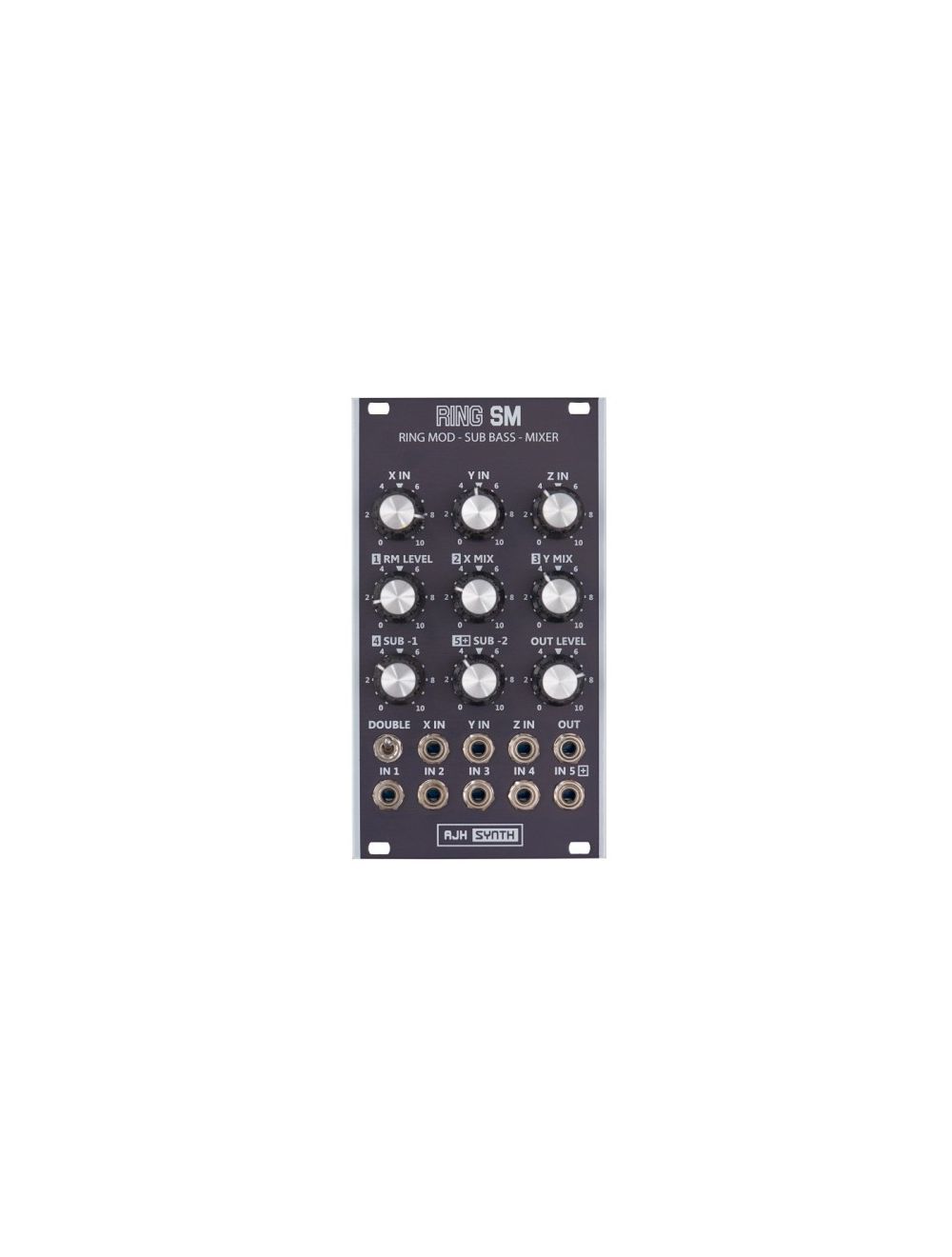AJH - Ring SM
AJH - Ring SM is an instant retro-analog drone machine. Combining the sound of a set of classic oscillators and a high-quality ring modulation circuitry will provide sounds that are convincing enough for a lot of years to come.
The AJH - Ring SM is four modules in one:
A very unique and warm sounding ring modulator with three inputs, X, Y & Z It is a vintage design based entirely on a discrete transistor core, and includes an extra, resonant Z modulator input. It also has a Frequency Doubling switch, from a single triangle or sine wave input an octave +1 output is generated
Two independent Sub Bass generators with very fast tracking, creating -1 Octave and -2 Octaves from the X input. These are not simple square wave subs, they generate specially shaped waveforms and are useful up to 1kHz – they have a much lower harmonic content than square wave subs, designed to have more power and sit much better in a mix.
A five input DC coupled mixer based on the discrete transistor CP3 modular design dating back to 1974. The Outputs of the ring modulator, X and Y inputs and Sub Bass outputs are routed to the mixer by default – plugging a patch cable into any of the mixer inputs defeats this normalising and allows it to be used as a regular 5 channel mixer for both audio and control voltages.
A clipping / distortion module – input 5 of the mixer is considerably “hotter” than the other four mixer channels and will clip the signal as soon as it hits threshold level. If a DC bias voltage is added the signal is shifted and this allows positive or negative asymmetric clipping of the waveform.
Module Depth: 24mm (34mm with power cable)
Current Usage: 55mA Positive, 50mA Negative
The Ring SM Module is available with either Silver or Dark Edition (Black) fascia panels
There are two independant Sub Bass Generators:


4: Distortion and Asymmetric Distortion Module
Symmetrical Clipping Distortion






